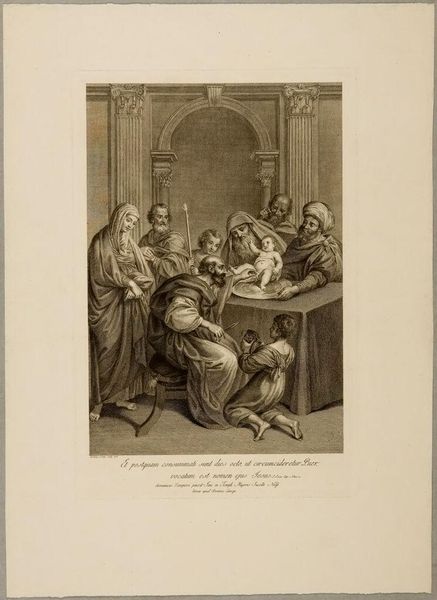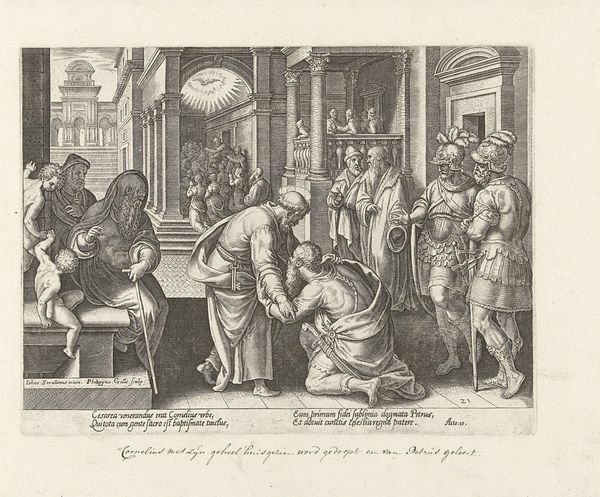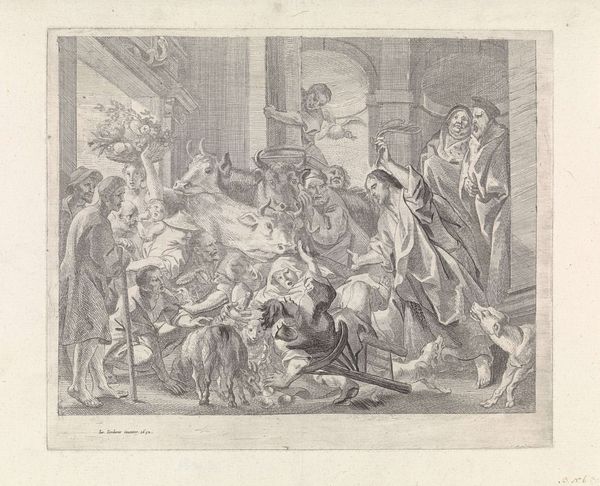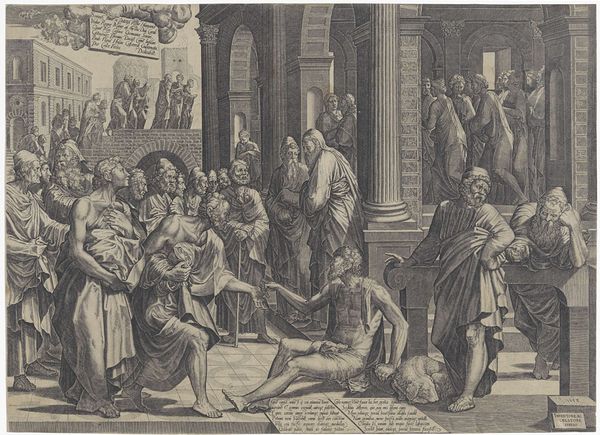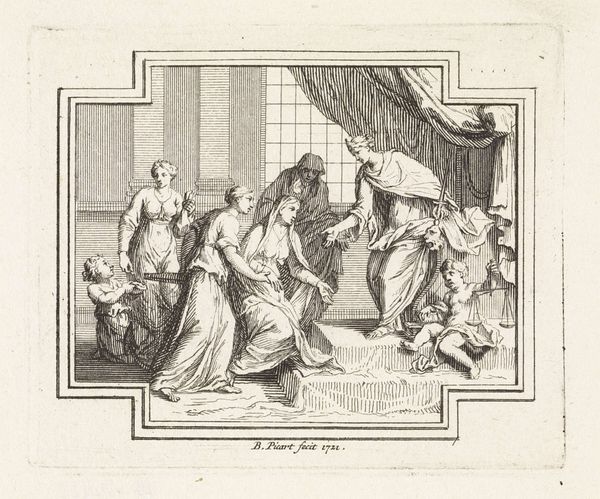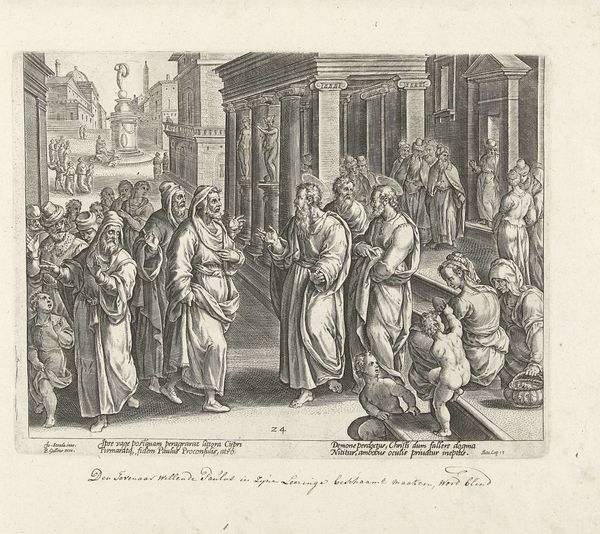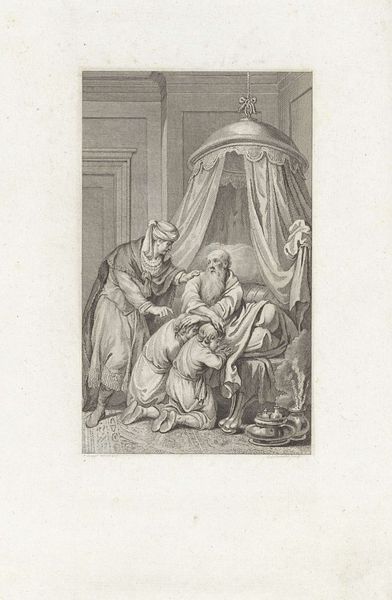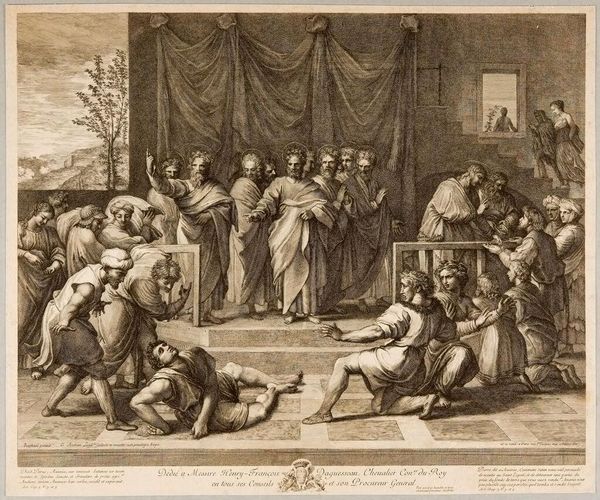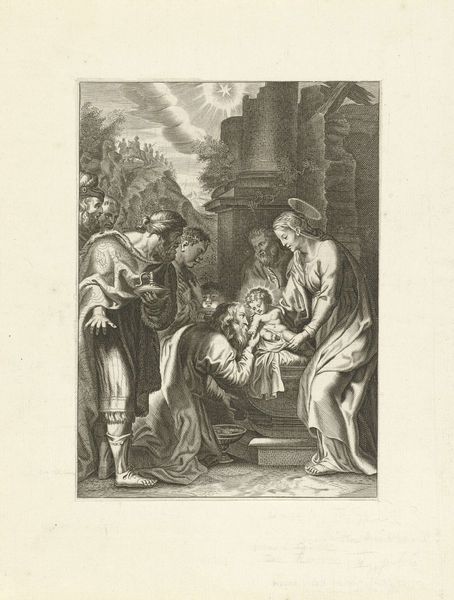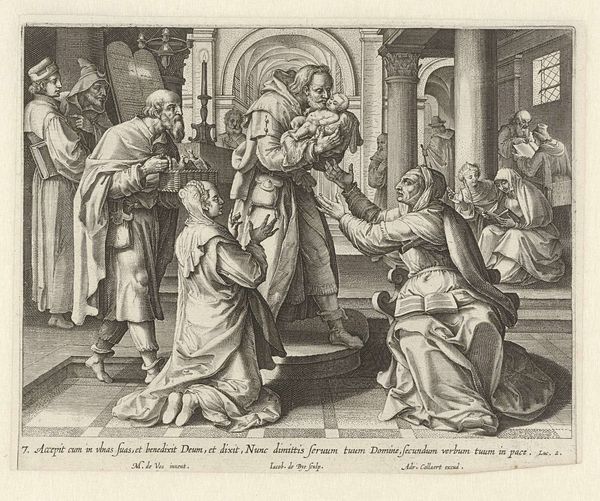
print, engraving
#
narrative-art
# print
#
landscape
#
classical-realism
#
figuration
#
history-painting
#
engraving
Dimensions: height 108 mm, width 170 mm
Copyright: Rijks Museum: Open Domain
Curator: Let's take a look at this print, held at the Rijksmuseum, titled "Laat de kinderen tot mij komen," dating roughly from 1826 to 1856. It's an engraving attributed to Dirk Jurriaan Sluyter. What are your initial impressions? Editor: Well, first, there’s a real sense of orchestrated chaos, isn’t there? A crowd pushing forward, children reaching. It gives a feeling of... urgent desperation almost, rendered in cool tones. Curator: The image directly references the biblical scene where Jesus welcomes children, despite his disciples' reservations. What do you make of it in relation to that? Editor: Immediately, I'm thinking about accessibility and who gets to participate in spiritual spaces. Who gets sanctioned love and protection? There’s something unsettling, isn't there, about the way the narrative seems to present children almost as props, symbols of purity rather than autonomous individuals with agency. The women particularly, are their bodies used to convey purity? Curator: It’s a loaded representation, for sure. These sorts of images, widely disseminated through prints, were profoundly influential in shaping perceptions about family, faith, and social order. The distribution networks are a really interesting aspect. Editor: And the construction of innocence too, as something both intrinsic to childhood, and something imposed upon them by the adults and the prevailing social narrative, religious, familial. I wonder, too, how it functioned within the colonial context, the politics of representation – these innocent beings ready to be "saved?" Curator: Right. This also prompts me to reflect on how the scene resonates with the role of art and the public, in the way that imagery and societal values intermingle. This print certainly aimed to educate but also indoctrinate certain norms and expectations within the household. Editor: It really underscores the way religious narratives can function as both a comfort and a form of control, particularly for marginalized groups. How notions of purity get weaponized within these contexts. Food for thought on faith, image, power and childhood! Curator: Indeed, plenty to ponder as we continue through the museum. Thanks!
Comments
No comments
Be the first to comment and join the conversation on the ultimate creative platform.
